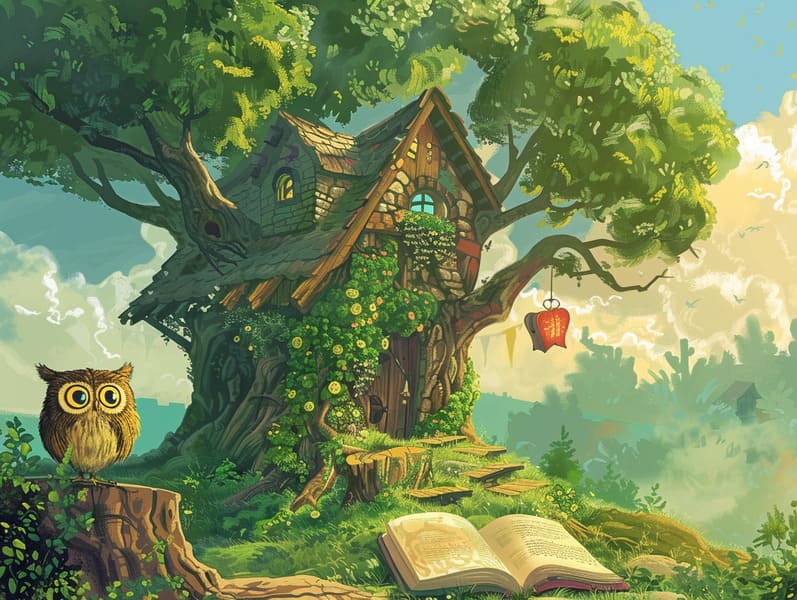Delving into the Background of Best Fairy Tales with Its Unwavering Delight.
Delving into the Background of Best Fairy Tales with Its Unwavering Delight.
Blog Article

Old fairy tales have ancient roots. These narratives have been whispered from one generation to the next well before they were ever transcribed. They originated from a variety of backgrounds, including Middle Eastern traditions. They were initially passed along among grown-ups, often carrying themes and messages reflective of the societal norms and beliefs of the time.
Jacob and Wilhelm Grimm, Jacob and Wilhelm (the Grimm brothers), were among the first to gather and publish many of these beloved fairy tales. Their collection, "Grimm's Fairy Stories," included stories like "The Story of Cinderella," "The Story of Hansel and Gretel," and "Snow White," which have since become classics in the world of timeless fairy tales. Similarly, Hans Andersen's fanciful tales, such as "The Sea Maid," and "The Ugly Duckling," have stolen hearts worldwide, establishing their place in the pantheon of beloved fairy tales.
Despite their age, traditional fairy tales remain as pertinent as ever, especially as children's night stories. These magical stories are now available in diverse formats, including vibrantly illustrated books, whimsical animations, and free fairy tales online.
Their persistent charm can be credited to several enchanting factors:
Valuable Lessons: Old fairy tales often illustrate important moral lessons. Narratives like "The Tale of the Boy Who Cried Wolf" teach the benefit of truth, while "The Story of the Tortoise and the Hare" exemplify the traits of persistence and meekness. These stories offer kids clear distinctions between virtue and vice, forming their moral compass in a mild yet significant way.
Empathy and Understanding: Classic fairy tales frequently present heroes facing struggles and tests, inciting listeners to comprehend with their struggles and support their triumphs. For instance, "Beauty and the Beast" shows us the benefit of seeing beyond looks to see the inner being of a soul, developing tenderness and discernment.
Cultural Appreciation: Many fairy tales are saturated in the cultural contexts from which they sprang. Engaging with these tales can provide illuminating insights into different ways of life, advancing a sense of cultural awareness and comprehension.
Inventiveness and Fantasy: The mythical elements in fairy tales—enchanted lands—revitalize children’s dreams. These stories take readers to fantasy realms, unleashing inventive thinking and a sense of fascination that stays a lifetime.
Timeless fairy tales are not only charming but also teaching. They work as alluring tools in fostering various intellectual and emotional capacities in kids. When traditional fairy tales are read aloud, they improve verbal skills by showing new terms and meanings and detailed sentence structures. This practice also advances auditory perception and attention span, as young ones listen intently, looking forward to see what happens next.
Furthermore, examining the themes and characters of fairy tales can foster critical thinking and cognitive skills. Young readers are shown to notice patterns, predict happenings, and grasp cause and effect. These debates also contribute to children verbalize their thoughts and feelings, fostering their emotional intelligence.
In today’s online age, the availability of online storybooks has made these tales more reachable than ever. Web-based platforms and applications extend ample collections of Grimm's fairy tales that can be enjoyed or played anytime, anywhere. Fairy tales recited are particularly well-received, supplying an captivating way for young ones to engage with these spellbinding stories. Voice books and read-out-loud videos transport characters and settings to life, often enhanced by charming soundtracks and melodies that enrich the storytelling experience.
The lasting allure of old fairy tales lies in their ability to adjust to contemporary times while sustaining their essential themes. Contemporary takes of these tales often showcase more varied characters and modern settings, making them relatable to today’s audience. However, the essential messages of guts, warmth, and justice remain unchanged, continuing to resonate with audiences of all ages.
Old fairy here tales also offer a sense of assurance and comprehensibility. They render a well-ordered narrative with a clear beginning, middle, and end, often concluding with the resolution of conflicts and the triumph of morality over immorality. This regularity can be heartening for the young, granting a sense of steadfastness in an shifting world.
Traditional fairy tales continue to entrance and enlighten new generations, maintaining their enchantment and pertinence in modern society. As bedtime stories for kids, they grant access to a perfect blend of charm and understanding, nurturing moral values, empathy, and creativity. The presence of digital storybooks and the sought after status of fairy tales narrated confirm that these ancient stories remain attainable to new generations.
By safeguarding and sharing these narratives, we continue to appreciate the rich tapestry of cultural heritage and cultural heritage. Whether you are delving into a vividly illustrated book, browsing a web collection, or playing an narrated book, the allure of ancient fairy tales is always within reach. These tales teach us of the steadfast essence of fairy tales and its ability to hold us together across generations and cultures.
Whether you are seeing a artistically illustrated book, exploring a virtual library, or listening to an audio story, the splendor of popular fairy tales is always within reach.
These fairy tales reveal of the unchanging force of stories and its ability to draw us together across epochs and places, weaving a spell that enchants and educates alike.